

In this Article
Male Pattern Baldness Today: What’s Changed?
Stage 1 Of Male Pattern Hair Loss: The Calm Before the Storm
Stage 2 Of Pattern Baldness in Men: The Temple Recession
Stage 3 Of Pattern Baldness in Men: Recession Becomes Reality
Stage 4: Crown Thinning Begins
Stage 5: When Front and Crown Connect
When to Seek Professional Help?Stage 6 & 7: The Advanced Phases
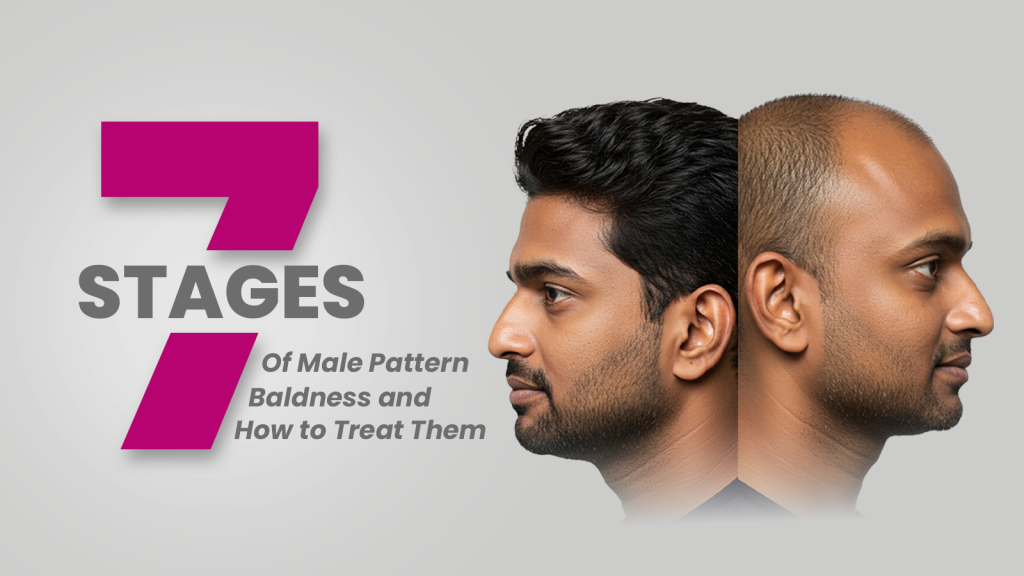
Male Pattern Baldness Today: What’s Changed?
Stage 1 Of Male Pattern Hair Loss: The Calm Before the Storm
Stage 2 Of Pattern Baldness in Men: The Temple Recession
Stage 3 Of Pattern Baldness in Men: Recession Becomes Reality
Stage 4: Crown Thinning Begins
Stage 5: When Front and Crown Connect
When to Seek Professional Help? Stage 6 & 7: The Advanced Phases
Noticing your hairline creeping back or a widening part in your crown can spark a quiet panic. You may find yourself googling hair loss remedies at 2 AM, zooming in on old photos, or avoiding certain hairstyles. The truth is, male pattern baldness (MPB), also known as Male Androgenetic Alopecia, is incredibly common. According to NCBI, by the age of 50, nearly 30-50% of men will experience some form of it.
But here’s the good news: It can be managed.
Today’s understanding of Male Androgenetic Alopecia has come a long way from outdated myths and miracle oils. Male pattern baldness shows to follow a predictable pattern, and we can track its progression using the Norwood Hamilton Scale, a 7-stage system that shows how hair loss evolves; from barely-there changes to advanced thinning.
This article will walk you through all 7 stages of male pattern hair loss, and what to do at each one.
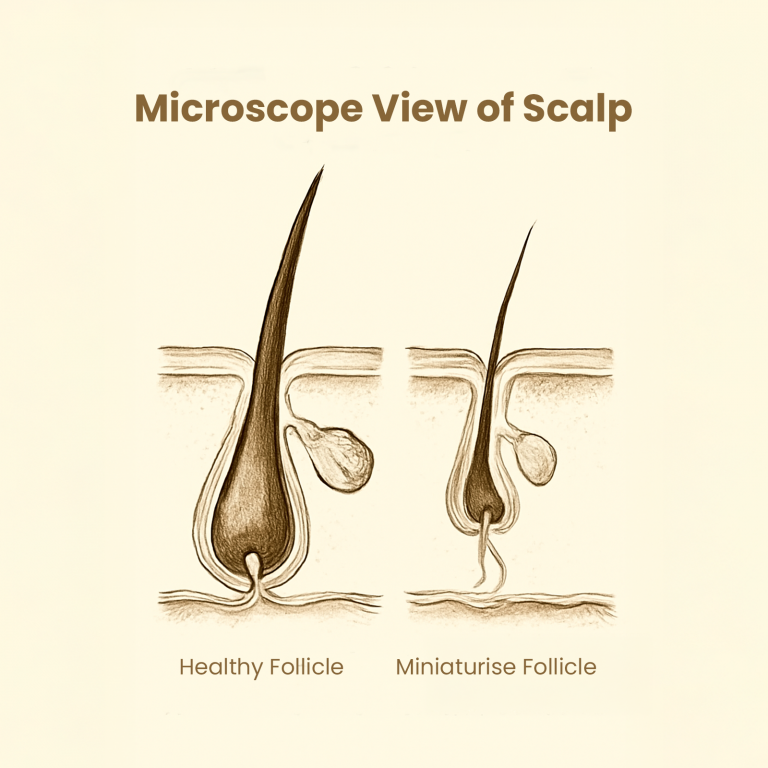
At Stage 1 of the Norwood Scale, there is no obvious hair loss to the untrained eye. The hairline looks intact, the crown seems full, and most men don’t suspect anything is wrong. But this is where early signs of Androgenetic Alopecia in men quietly begin.
While visually unnoticeable, internal changes may already be in motion. Hair follicles, especially along the frontal hairline and crown, may start miniaturizing due to the effects of dihydrotestosterone (DHT), a hormone known to shrink follicles over time in genetically susceptible men.
According to Dr. Jerry Shapiro, Professor of Dermatology at NYU Langone Health,
Hair loss begins before it’s visible. By the time patients notice recession or thinning, up to 50% of the hair in that area may already be miniaturised.
Increased daily hair shedding (more than 100 strands/day).
Feeling like your hair is getting “lighter” or less dense.
Dry, itchy, or inflamed scalp—sometimes the result of stress or poor scalp health accelerating hair loss.
Noticeable widening of part lines (especially visible under bright light or wet hair conditions).
What You Can Do at Stage 1?
Get a trichoscopy or scalp imaging scan to detect early follicular miniaturization.
Start preventive scalp care: caffeine-based shampoos, DHT-blocking ingredients like saw palmetto, and salicylic acid for buildup removal.
Focus on nutrition (iron, vitamin D, omega-3s) and reduce chronic stress, both of which are strongly linked to telogen effluvium and DHT sensitivity.
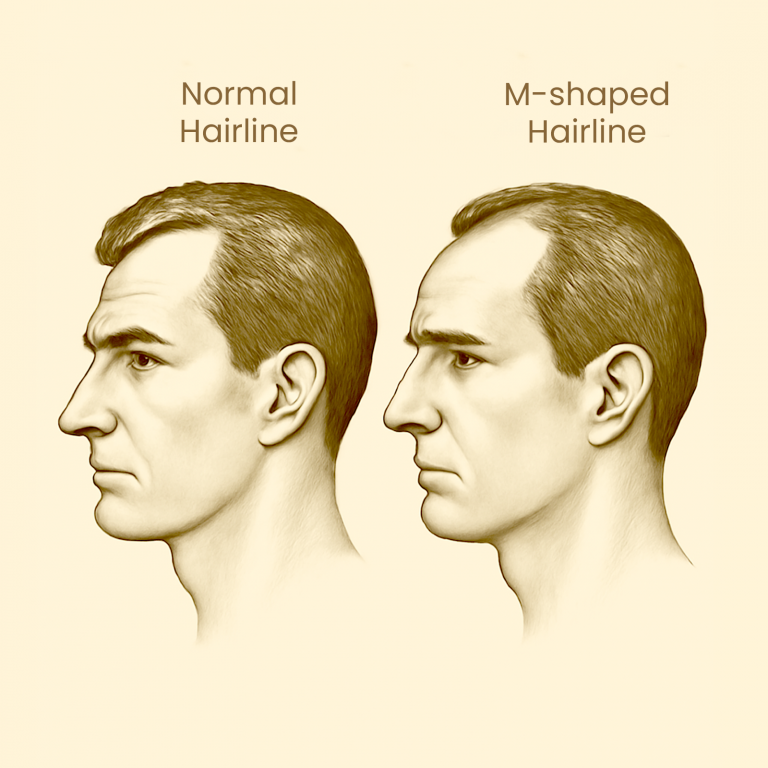
This is where male baldness begins to leave visible clues. At Stage 2 on the Norwood Scale, there is noticeable thinning or recession at the temples, typically forming the earliest signs of an “M-shaped” hairline. The central hairline may still appear stable, but the corners are beginning to recede. This stage is still considered mild, but it’s a turning point—a signal that the underlying hair loss process is accelerating.
Since the overall hair density may look normal, many men tend to avoid going to the doctors. They also start extensively using over-the-counter remedies. Some would simply ignore the signs until it gets worse.
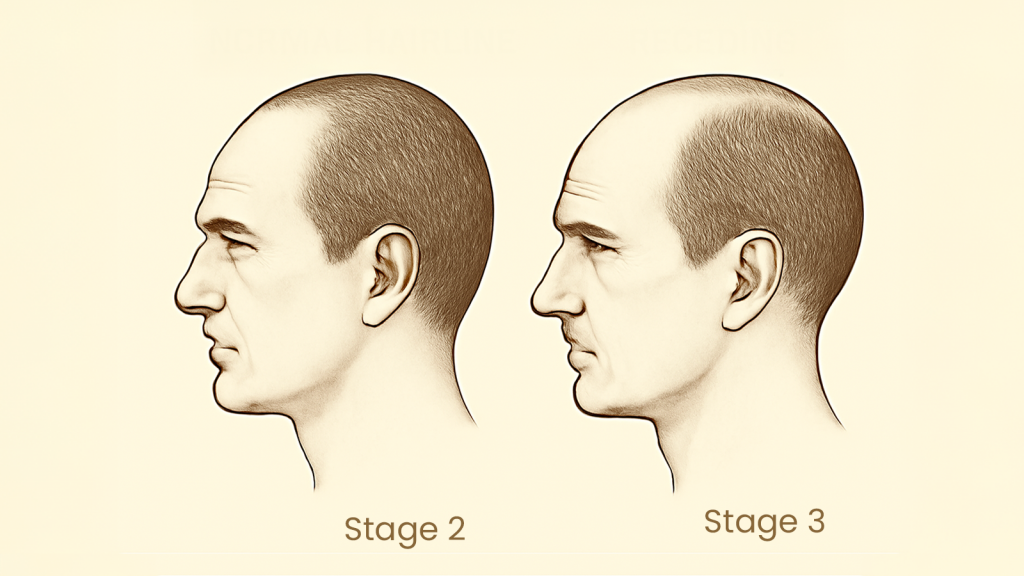
At Stage 3, male pattern baldness becomes visibly noticeable to others. The M-shaped hairline deepens with more pronounced temporal recession, and for many men, this is the first point where denial starts to fade and concern becomes real.
According to dermatologists, this is the most common stage at which Indian men seek clinical help, often after trying home remedies or cosmetic cover-ups that haven’t worked.
Topical minoxidil (2%-5%) is an FDA-approved drug and is easily available in India. Minoxidil helps in increasing blood flow to the hair follicles. It also helps in extending the growth phase and helps maintain hair density.
Finasteride blocks the enzyme 5-alpha-reductase, which converts testosterone to DHT. Finasteride is clinically proven to slow hair loss and promote hair regrowth.
At this stage, the follicles at the temples are now significantly miniaturised, producing thinner and weaker hair that is more likely to fall out. The central hairline may also start moving backwards, though the crown usually remains intact at this point. This is when men start noticing:
At this point, you should only stick to proven treatments but intensify the dosage. The Topical Minoxidil dosage should be upped to 5% and used consistently. Pair with microneedling once or twice a week to increase absorption and stimulate dermal papilla cells. You can also consider using Duasteride in a low dose if Finasteride has not worked for you. This should be under complete dermatologist supervision.
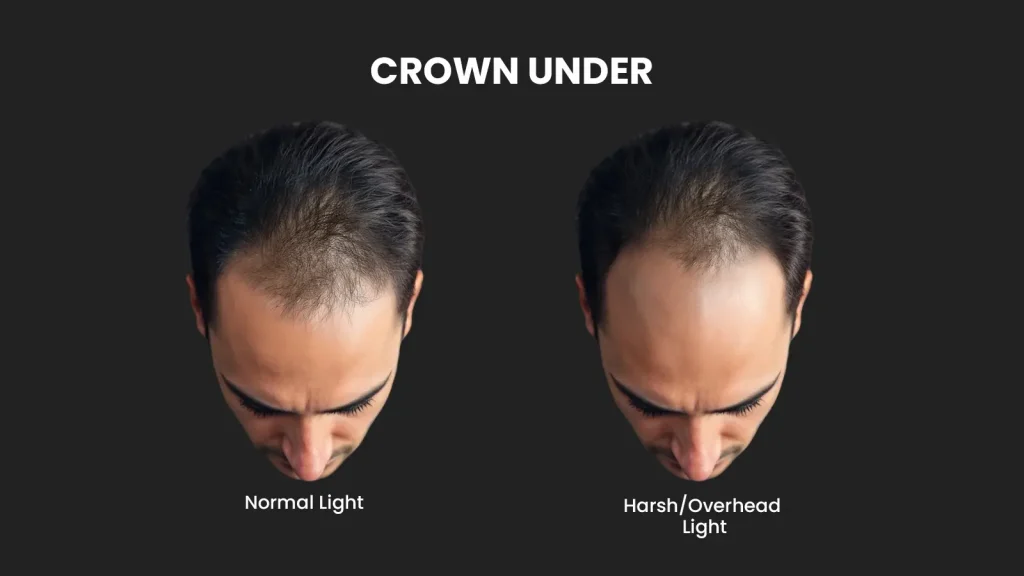
If you’re noticing your scalp peeking through the top of your head, especially under overhead lighting or in photos, you’re likely entering Stage 4 of male pattern hair loss. At this stage, your hairline continues to recede, but the real game-changer is what happens at the crown (also known as the vertex). This is when two previously separate zones: your temples and the crown, start showing noticeable thinning, and for many men, that’s when the alarm bells ring.
Unlike frontal recession, which is easier to spot in the mirror, crown thinning often goes unnoticed until it becomes significant. The hair at the crown tends to thin in a circular or spiral pattern, gradually expanding outward. Because the crown is difficult to see without mirrors or photos, many men don’t realise they’re losing hair there until the area is already advanced.
At this point, treatment needs to be multi-modal; a single product or supplement won’t reverse crown hair thinning alone.
Minoxidil is particularly effective at encouraging regrowth on the crown. This product should be applied twice daily, as consistent use is essential for visible results. Choosing a spray or foam format can help achieve more even coverage across the crown area.
Formulated with proven DHT blockers that can slow or halt hair loss at both the hairline and crown, treatment often begins with Finasteride, while Dutasteride may be considered off-label for stronger control. Noticeable improvement usually appears within three to six months of consistent use.
Devices like laser combs and helmets help in stimulating the blood flow and ATP (Adenosine Triphosphate) in follicles. ATP production is the main part that helps in the normal hair growth cycle and hair shaft formation. LLLT is especially beneficial for widespread thinning of the crown.
Hair PRP treatment involves injecting your own growth factors on the scalp to stimulate inactive follicles. It also works well with oral and topical medication.
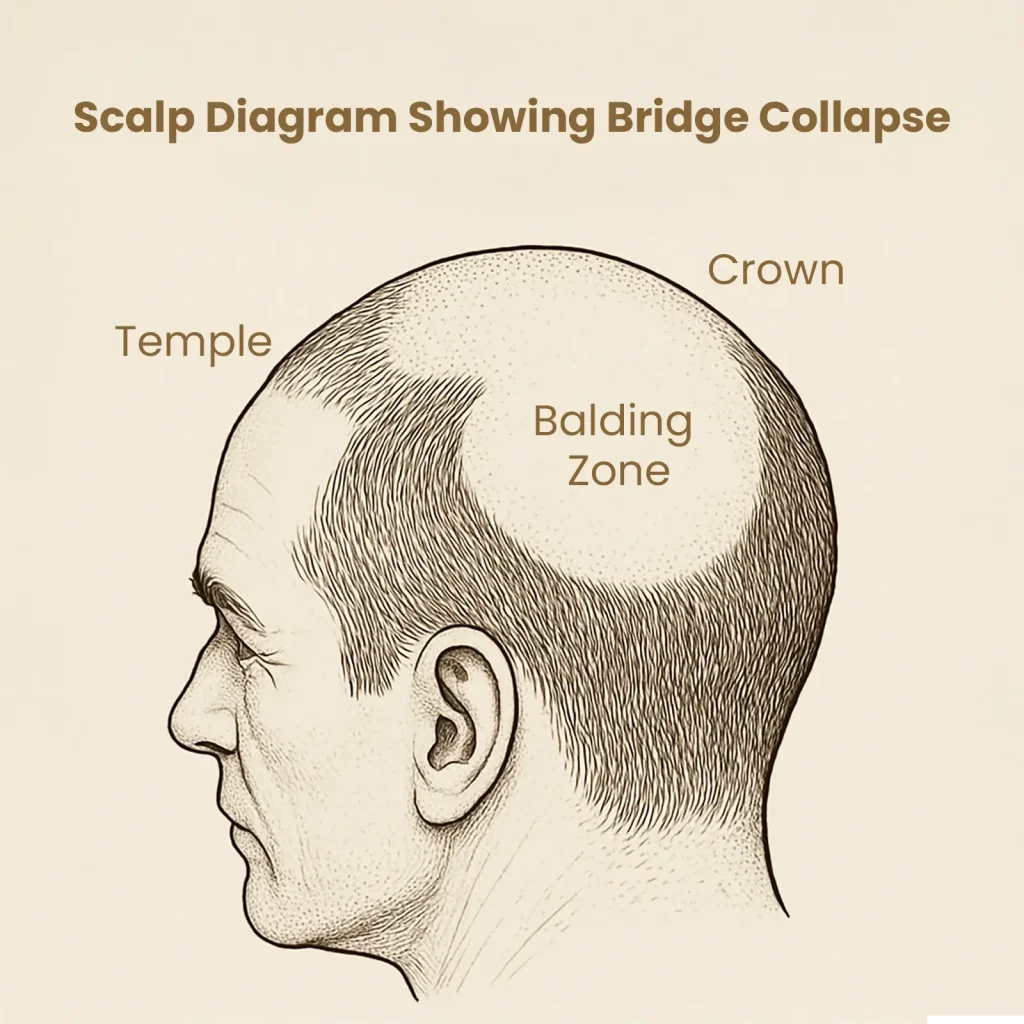
Stage 5 marks a critical turning point in male pattern hair loss—this is where the once-separate areas of hair loss at the frontal hairline and crown begin to merge. The “bridge” of hair that previously separated the two zones starts to thin out or vanish completely, leading to a large balding area across the top of the scalp. This is often when men begin seriously exploring medical intervention or hair restoration options
This is considered the beginning of advanced male pattern baldness.
At this stage, regrowth becomes more challenging but not impossible—especially with the right mix of therapies. However, expectations need to be realistic. Most results aim to improve density and prevent further loss rather than restore a full head of hair without surgical support.
At stage 5, Dutasteride or Finasteride is essential to stop further miniaturisation of hair follicles. Although Dutasteride helps with deeper DHT suppression, you should use it only if it’s prescribed by a dermatologist.
PRP combined with microneedling helps stimulate dormant follicles and improve scalp health. It’s especially effective in the thinning “bridge zone,” potentially thickening weak hair. Results vary, depending on follicle viability and consistency of treatment.
Hair transplantation is the most effective long-term solution for Stage 5 hair loss. It involves relocating healthy follicles from the sides and back to bald areas. Advanced techniques like FUE and DHI provide natural, lasting results with proper post-op care.
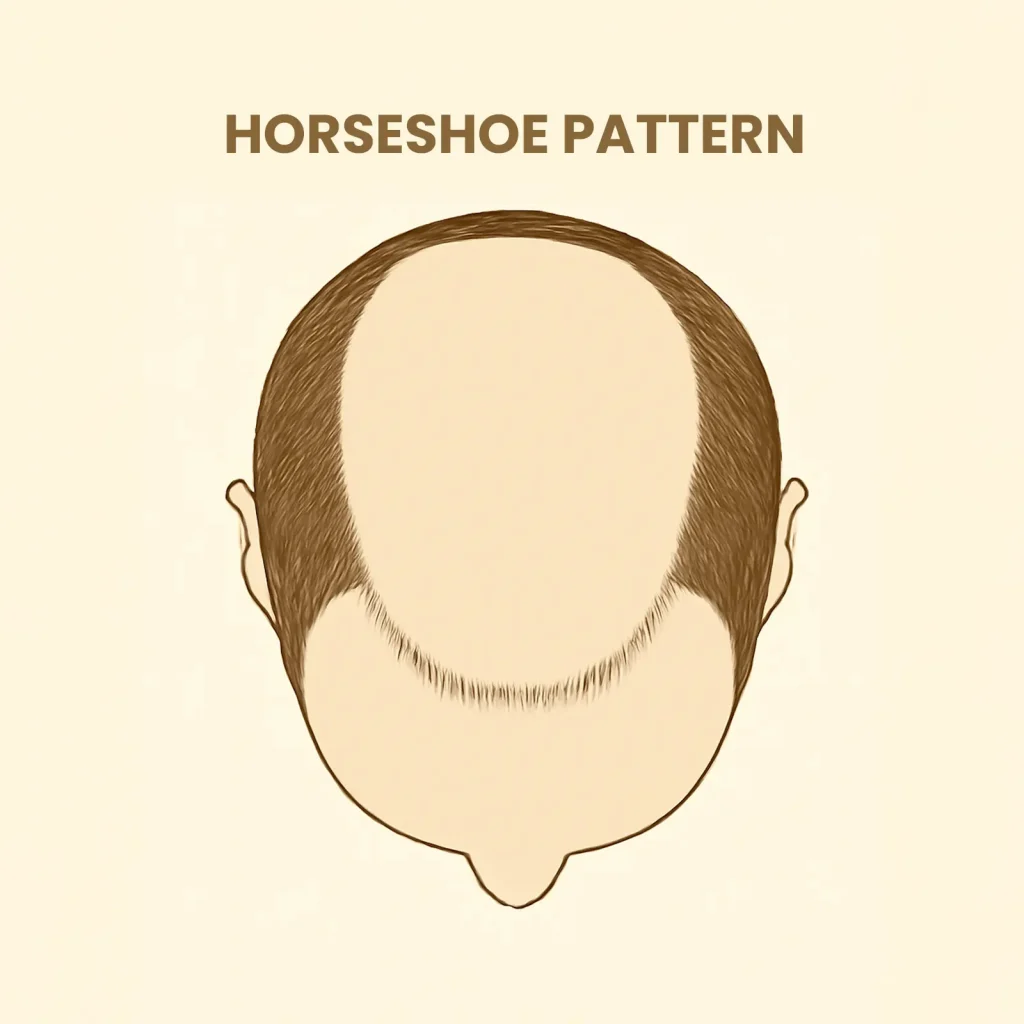
By the time a man reaches Stage 6 or 7 of male pattern baldness—also known as advanced androgenetic alopecia for men—most of the top of the scalp is bare. What remains is a rim of hair around the sides and back of the head, forming what is famously referred to as the “horseshoe pattern.”
At this stage, the battle is no longer about preventing hair loss—it’s about deciding how to live with it, restore it, or redefine your look altogether.
The horseshoe-shaped rim of hair (also known as the occipital and parietal fringe) is often resistant to DHT, which is why it remains even when the crown, front, and mid-scalp have gone completely bald. But this remaining hair often thins in density too, and the scalp becomes fully visible under light.
The front and crown have merged, forming a single, large bald area across the scalp.
The bridge of hair in the mid-scalp is gone or extremely sparse.
Hair loss on the sides and back may creep higher, especially in Stage 7.
Scalp health declines, with lower blood flow and reduced follicular activity.
Hair transplant surgery is an option for advanced hair loss, but it comes with limitations due to the finite donor area—typically the sides and back of the scalp. This restricted supply of healthy follicles means full coverage, especially for extensive balding, may not be achievable. Instead, the realistic goal becomes creating a natural-looking hairline or partially restoring density in strategic areas to frame the face and improve overall appearance. Techniques like Follicular Unit Extraction (FUE) or Follicular Unit Transplantation (FUT) are commonly used, though patients may require multiple sessions to achieve desired density and coverage.
Maybe it’s just a receding hairline. Maybe the crown is starting to thin. Or maybe you’re already seeing that classic horseshoe pattern. No matter which stage of male pattern baldness you’re in, there’s always a path forward.
At Wizderm, we don’t believe in one-size-fits-all treatments. Our expert dermatologists use a stage-specific, root-cause-based approach to assess your condition and create a personalised plan; whether that involves minoxidil, oral finasteride, non-hormonal innovations, or hair restoration procedures.
Hair loss is personal, and so is the journey to treat it. As we’ve seen through the 7 stages of male pattern baldness, early awareness and timely action can make a significant difference in long-term outcomes.
Whether you’re just noticing a few extra strands on your pillow or you’ve already reached an advanced stage, know this: you’re not alone, and you’re not without options.
Wizderm combines medical expertise, evidence-based treatments, and genuine care to help you feel confident in your scalp and yourself. Because hair might be what’s falling; but self-worth never should.
Visit your nearest Wizderm clinic today and take the first step toward stronger, fuller, healthier hair.
Yes, male pattern baldness can be slowed down and partially reversed, especially in the early stages. Treatments like minoxidil, finasteride, and newer non-hormonal options can regrow hair in thinning areas, but completely restoring lost hair in advanced stages is unlikely without procedures like hair transplant. Early intervention is key
Male pattern baldness can be managed but not completely cured. Treatments like minoxidil, finasteride, PRP, and hair transplants can slow hair loss and restore some growth. Early intervention offers the best results, but full regrowth is rare. Maintenance is key to preserving and optimizing outcomes over time.
Yes, balding at 25 is relatively common. Male pattern baldness can begin as early as the late teens or early 20s due to genetics and hormonal factors. Early signs like a receding hairline or crown thinning are typical, and starting treatment early often leads to better results.
Yes, hair loss tablets like finasteride can be effective for many men. They work by blocking DHT, a hormone that shrinks hair follicles. This can slow hair loss and even regrow hair in some cases. However, results vary, and consistency is key, but, potential side effects should be considered
Yes, a hair transplant is generally considered permanent. The transplanted hair follicles, taken from the sides or back, are genetically resistant to balding and typically continue to grow for life. However, surrounding non-transplanted hair may still thin over time, so ongoing care or treatments might be needed to maintain overall density.
Pattern baldness is more common in males due to higher levels of dihydrotestosterone (DHT), a hormone derived from testosterone. In genetically predisposed men, DHT shrinks hair follicles, leading to thinning and eventual hair loss. Women also experience pattern hair loss, but typically with less DHT sensitivity and a different pattern.
Male pattern baldness cannot be fully cured naturally, as it’s driven by genetics and hormones (mainly DHT).
Yes, male pattern baldness is primarily genetic. It’s inherited from both maternal and paternal sides and is linked to sensitivity to dihydrotestosterone (DHT). If close relatives have experienced early hair loss, there’s a higher chance you may too. Genetics largely determine when and how rapidly hair loss progresses
In this Article

In the quest for silky-smooth, hair-free skin, waxing has emerged as a go-to option for many. Its promise of long-lasting results compared to shaving makes it an easy option. According to Magna intelligence, it is assumed that the hair reduction market is going to reach USD $1,081.2 million by the end of 2029. But is it really that harmless and effective as a method for removing unwanted hair? Are there no underlying side effects of waxing that need our attention?
This comprehensive guide will show you the side effects of waxing, and explore alternatives like laser hair removal.
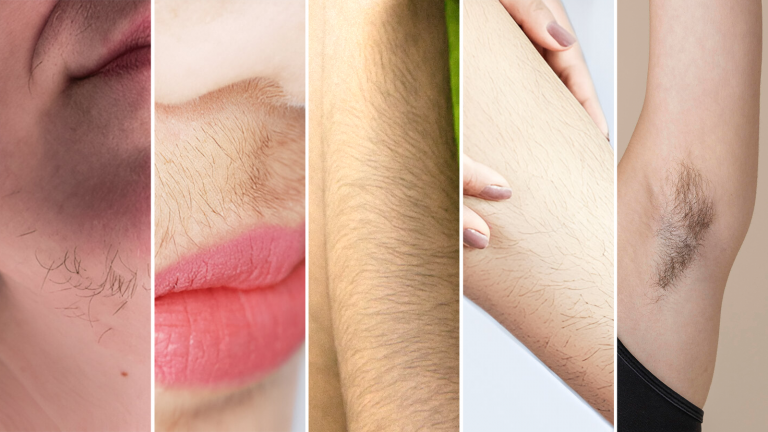
Before we get into the problem, we need to get to know the root cause of the problem, unwanted hair. Unwanted hair means the growth of hair in areas which are deemed as undesirable or unaesthetic. Common regions include upper lip, chin, arms, underarms, legs, and bikini line. Causes of unwanted hair growth include:
Hair growth patterns can run in families and vary significantly by ethnicity.
Certain drugs like steroids or hormone treatments can increase hair growth.
Thyroid or adrenal gland imbalances may influence hair growth distribution.
While some people embrace their body hair (as they absolutely should!), others seek removal for comfort, hygiene, or appearance—especially in societies where hairlessness is associated with beauty or professionalism. This is where waxing, shaving, laser, and other hair removal methods come into play.

Waxing is a widely used method of hair removal that works by physically pulling hair out from the root—resulting in smoother skin that lasts significantly longer than shaving. From legs to lips, arms to underarms, and even bikini zones, waxing has become a staple in both at-home and salon-based hair removal routines. But it’s especially popular for face hair removal facial treatments, thanks to its precision and relatively quick results.
Whether you’re at a spa or doing it by yourself at home, the step by step waxing process follows a structured routine designed to minimize discomfort and maximize results. Here’s how it typically unfolds:
The first step in the waxing process is to ensure the skin is clean, dry, and exfoliated. Removing dead skin cells helps the wax grip hair more effectively and reduces the risk of ingrown hairs.
Wax selection plays a crucial role in the outcome. For example:
Wax is applied in the direction of hair growth using a spatula or applicator. In facial waxing, extra care is taken to avoid delicate areas such as around the mouth.
The wax is then pulled off in the opposite direction of hair growth, pulling hair from the follicle. This results in a smooth finish that can last anywhere from 3 to 6 weeks, depending on your hair growth cycle.
Waxing is especially good for targeted hair removal, offering a quick solution.
Waxing presents several advantages.
Despite these benefits, it is crucial to consider the potential side effects associated with waxing.
While waxing is celebrated for its efficacy and so-called long-lasting results, it’s very important to understand that it comes with its own set of side effects, especially for sensitive skin types or first-time users. The process of pulling hair from the root can trigger a variety of skin responses. Understanding the side effects is essential for setting realistic expectations and ensuring proper post-care.
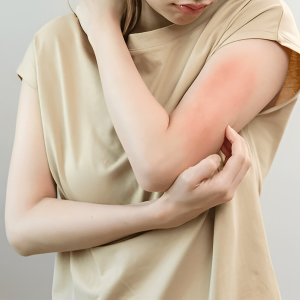
The most common reaction post-waxing is mild redness or inflammation, particularly in sensitive areas like the face, underarms, or bikini area. This occurs due to increased blood flow to the areas as hair is forcibly removed from the follicles.
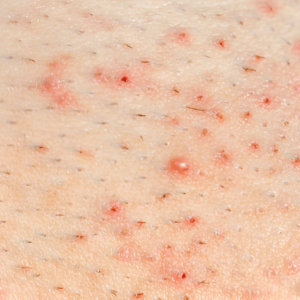
Small, pimple-like bumps may develop a few hours after waxing. These are usually caused by minor follicle inflammation or trapped hairs. Ingrown hairs are more common with coarse or curly hair types and often appear within a few days of waxing.
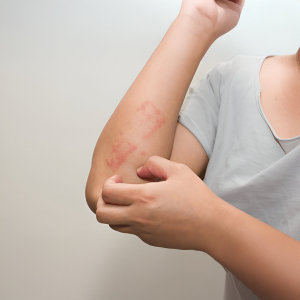
Some individuals may experience allergic reactions to ingredients in the wax, especially in the wax, especially if it contains fragrances, resins, or essential oils. This can lead to a skin rash after waxing, a more pronounced, itchy, or blotchy reaction that requires prompt attention.
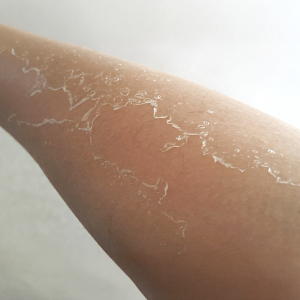
Improper waxing temperature or poor technique can result in mild burns, particularly with hot wax. The risk is heightened during facial waxing, where the skin is thinner and more delicate.
Proper aftercare, including soothing lotions and avoiding sun exposure, can reduce these effects.
Although rare, it is important to know that there can be long-term side effects of waxing. It can occur if proper after-wax care is neglected or the wrong type of wax is used for your skin.
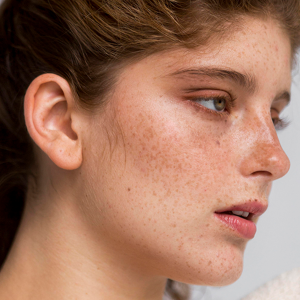
One of the more subtle yet persistent side effects is post-inflammatory hyperpigmentation (PIH). This condition causes darker patches of skin, especially upper lip, underarms, or bikini line. It’s more common among individuals with medium to deep skin tones.

Regular waxing can weaken the outer skin barrier, especially with frequent facial hair removal. Over time, this may lead to increased skin sensitivity, dryness, and a heightened risk of irritation from skincare products or environmental factors. Face wax side effects like dryness or flakiness often become more noticeable with ageing skin or if exfoliation is overdone.
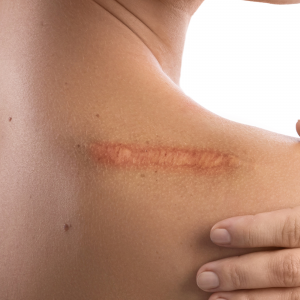
While rare, improper technique, especially in unsanitary environments, can cause micro tears in the skin, leading to scarring or bacterial infections. This is more likely when waxing over active acne, sunburned skin, or broken dermal tissue. Facial waxing in particular requires caution to avoid long-term texture changes.
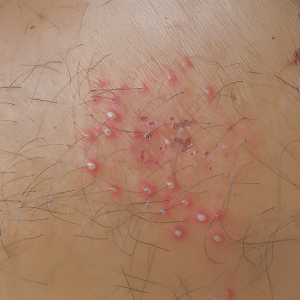
Repeated trauma to hair follicles can cause folliculitis, an inflammation or infection of the follicle. It appears as a pus-filled bump and may need topical treatments to resolve.
Individuals with sensitive skin or underlying conditions should consult a dermatologist before waxing.
Several factors can affect the likelihood and severity of side effects of waxing. They include:
Skin Type– Sensitive skin is more prone to irritation.
Hair Texture– Coarse hair may be more painful to remove.
Wax Quality– Low-quality wax can increase the risk of adverse reactions.
Technique- Improper application or removal can damage the skin.
Aftercare- Neglecting post-wax care can exacerbate side effects.
Choosing the right wax and following proper techniques are essential for minimising risks.
Waxing may be a popular choice for unwanted hair removal and full body smoothness, but it’s not without its drawbacks, especially if you are prone to side effects of waxing like rashes, or if you’re just tired of the tug-and-pull. Fortunately, the world of hair removal offers a variety of alternatives that cater to different skin types, pain thresholds, and long-term goals.
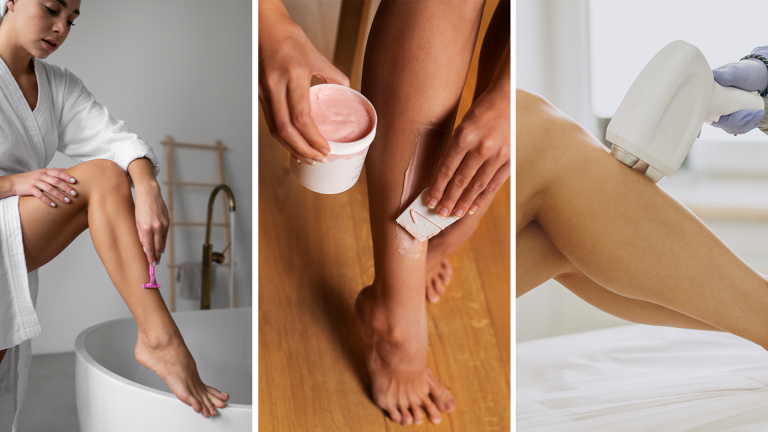
The most accessible method, shaving cuts hair at the surface level. It’s painless and quick but requires frequent upkeep; typically every 5 to 7 days. It also carries the risk of nicks, razor burns, and ingrown hairs.
These chemical creams dissolve hair at the skin’s surface. While convenient, they can cause irritation or allergic reactions, particularly on the face or bikini line.
The most sophisticated alternative is laser hair reduction, a long-term solution that targets hair follicles with concentrated light, reducing the scope of hair regrowth over time. According to a study, over 1.1 million laser procedures were performed in the U.S. alone in 2022. This shows the rising popularity of laser hair reduction.
Laser hair reduction is especially beneficial for those experiencing frequent side effects of waxing, like irritation or recurrent ingrown hairs. It also eliminates the hassle of step-by-step waxing and reduces the risk of skin rash post-waxing in the long run.
Wizderm Skin and Hair Clinic offers advanced laser hair reduction customised to individual skin tones and hair types, ensuring optimal safety and effectiveness. With fewer side effects, it’s an investment for smoother, healthier skin.
The minor side effects are common and can be managed easily at home; there are certain symptoms that require professional attention. Those can be:
Consulting a dermatologist ensures proper diagnosis and treatment.
Waxing offers a convenient solution for hair removal, delivering smoother skin and long-term results. However, it’s not without potential side effects, ranging from mild irritation to more severe complications. Understanding these risks and taking preventive measures like proper technique, quality products, and appropriate aftercare can enhance the waxing experience. For those seeking alternatives, options like laser hair reduction provide excellent results, albeit with their considerations. Ultimately, informed choices and professional guidance are the key to achieving desired results while maintaining skin health.
Waxing cannot directly cause permanent skin damage, but if the aftercare is neglected, it can cause irritation and redness, or worse, hyperpigmentation. These side effects of waxing can be taken care of easily if post-waxing care is done properly.
To prevent ingrown hairs after waxing, exfoliate the skin gently 2–3 times a week using a scrub or chemical exfoliant like salicylic acid. Keep the area moisturised with a non-comedogenic lotion to maintain skin softness. Avoid tight clothing that can cause friction. Refrain from touching or scratching the waxed area. Apply a soothing antiseptic or aloe vera gel to reduce inflammation. Regular care and hygiene help keep pores clear and prevent hair from curling back into the skin.
Allergic reactions to waxing can show up in redness, inflammation, itchiness, and burning sensations, and the development of bumps or hives. In severe cases, the skin may also peel.
One of the less common side effects of waxing is hyperpigmentation or skin discolouration. It’s often avoidable with proper technique and product selection.
Yes, laser hair reduction is better than waxing. It is better due to the longer-lasting results, reduced maintenance, and improved skin health
Yes, laser hair reduction is way more cost-effective in the long run. Initially, it may seem higher than usual, but laser hair reduction needs way less maintenance, which means less money spent. That means while you spend Rs3000, on average, a month on waxing for the next 30 years, for laser hair reduction, you spend Rs 5000 a month for 6 sessions and not worry about it for the longest time.
In this Article
What are Professional Skin Lightening Treatments?
5 Benefits of Professional Skin Lightening Treatments?
3 Effective and Safe Skin Lightening Treatments?
5 Common Myths and Facts About Professional Skin Lightening Solutions?
6 Common Home Remedies for Skin Fairness?
Benefits of Skin Lightening Treatments at Home?
Facts about Body and Skin Lightening Treatment at Home
Professional Skin Lightening Treatments Vs. Home Remedies: Which is Better?
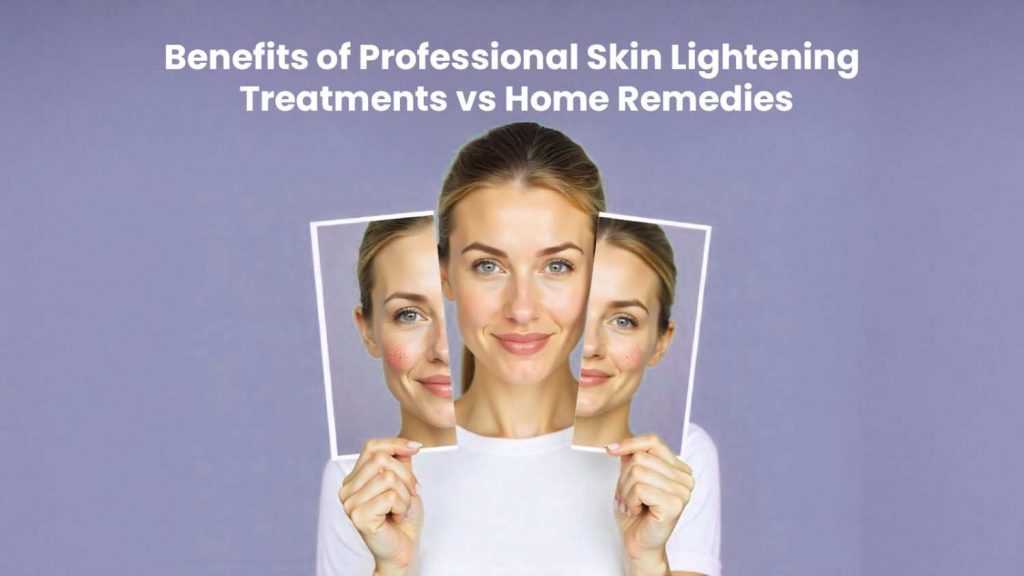
A Skin lightening treatment is often confused with delivering skin fairness. However, the primary goal of professional services or home remedies is to achieve radiant skin by reducing hyperpigmentation and fading the appearance of dark spots and uneven skin tone.
Every individual’s natural skin tone is beautiful, and changing it only reflects the amount of exploitation beauty standards have on our thought process. Now, to navigate more easily through the battle between home remedies and professional treatments, this blog is here to help. Read further to know more.
Professional-grade skin lightening treatments involve a range of dermatological practices that can control excess melanin production in the skin cells, leading to a more radiant, brighter and even-toned appearance. Such practices help address skin concerns like signs of ageing, sun damage-induced dark spots, post-acne marks and hyperpigmentation, helping restore the skin’s natural radiance.
Skin lightening and whitening treatments help you achieve more than just a radiant and clearer complexion; they also boost your confidence. Know more about professional skin lightening benefits through the following points:
While there is a range of skin lightening treatments available across the cosmetology and esthetician world, some of the most popular and safe treatment options are marked below:
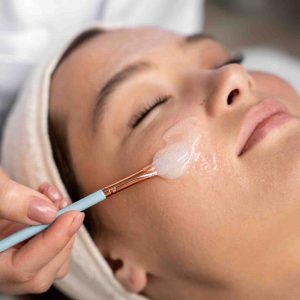
A chemical solution of salicylic acid or glycolic acid exfoliates the epidermis, the outer layer of the skin, revealing a more radiant and smoother complexion. These chemical peeling solutions work exceptionally well for skin concerns like melasma, post-acne hyperpigmentation and superficial acne scars.

Skin lightening ingredients in OTC (Over the Counter) creams and serums, like azelaic acid, kojic acid, hydroquinone, or vitamin C, can help even skin tone and minimise the appearance of hyperpigmentation. While these are readily available at drugstores, they must be used under a doctor’s supervision to avoid possible side effects. One should apply it directly to the affected areas across the face and body.
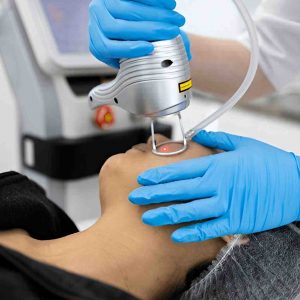
Professional laser therapies at renowned clinics use advanced lasers like the Q-switched laser, which precisely and effectively target and disintegrate melanin deposits in the skin, thereby fading dark spots, the appearance of melasma, and other hyperpigmentation issues.
While the skin lightening and brightening treatments help in restoring the skin’s lost radiance, some myths may discourage you from achieving clear, bright skin. Read to know more:
Fact: Similar to other skincare products in your daily routine, skin brightening topical solutions take time to show results. No such topical creams or serums can work overnight. Consistently using the prescribed solutions in the recommended amount and application method will start showing results in a few weeks or months.
Fact: Skin lightening treatments are not limited to any specific skin tone. Even light-toned people can get dark spots and hyperpigmentation because of factors like sun damage and acne marks. Hence, these professional procedures help people of all skin tones to minimise the appearance of dark patches and sun damage spots.
Fact: Common chemicals used for skin brightening include kojic acid, azelaic acid, and hydroquinone, which well-established dermatological clinics use in safe concentrations. However, overuse of these chemicals can cause skin sensitivity and irritation; hence, seeking professional service is significant.
Fact: There’s no such thing as ‘permanent skin lightening treatment’ as the results obtained from these procedures can last only a few months or years, depending on the treatment type and the patient’s skin type. Maintenance is essential to retain the outcomes.
Fact: No, firstly, any individual can benefit from skin whitening treatments irrespective of their gender. Secondly, the cost of such procedures is based on the intensity of the individual’s skin condition, the professional service provider, the type of treatment, and the location. Topical solutions are often relatively less expensive than laser therapies.

Home remedies for skin lightening comprise a few common kitchen ingredients like gram flour, turmeric, lemon, yoghurt, rice water and papaya. Here are 6 of the relevant skin whitening remedies at home that one seeking a ‘natural fix’ can check:
Home remedies for skin whitening are popular in Asian households for the following benefits:
Most of the ingredients found in home remedies are found in every Indian kitchen or local grocery stores. Natural ingredients are budget-friendly, making them a viable option for many.
Natural home remedies are gentler on the skin as they are free from any harsh chemicals. This builds trust among many individuals by familiarising them with skincare regimes.
Unlike commercial skin lightening services, home remedies do not require monthly or yearly maintenance. Using them for a certain period in the correct method can reveal sustainable results.
‘Natural ways are always safe,’ but is it? Take a look at these facts about body and skin lightening treatment at home that clinical experts highlight:
Explanation: While ingredients like yoghurt, turmeric and lemon may be budget-friendly options and offer temporary radiant-like results, they don’t penetrate deep into the skin to reverse melanin-induced hyperpigmentation.
Explanation: Professional skin lightening therapies use scientifically tested and clinically proven ingredients (in safer concentrations) and technology that provides sustainable and reliable results by targeting pigmentation at the root.
Explanation: Ingredients like lemon juice or baking soda can irritate the skin, strip the natural oils, disrupt the skin barrier, and even cause burns, hence worsening pigmentation in the applied areas. Falling for home remedy propaganda can prove harmful for sensitive skin.
If you are experiencing the side effects of home remedies and seeking professional guidance for spotless and radiant skin, booking an appointment at Wizderm will be a smart, trusted step. At Wizderm, experienced dermatologists offer personalised skin lightening treatments tailored to your unique skin type, concerns, and budget.
Instead of superficial fixes, you will receive a detailed skin analysis and a customised treatment plan designed to deliver safer, longer-lasting results. Check this out to learn more about our professional skin lightening procedures.
While home remedies may seem affordable and harmless, they can be quite ineffective when it comes to outcomes and may even heighten irritation and allergies for sensitive skin. Professional skin lightening services at Wizderm are science-backed, dermatologist-led, and customised to your unique skin needs.
Take a step towards a clearer, brighter complexion and sustainable skin health without the guesswork. Book an appointment online today to connect with top experts across India!
Yes, skin lightening treatments are safe for all skin types, including sensitive skin, if availed from a trusted and well-established, dermatologist-led clinic like Wizderm.
Noticeable results depend mainly on the type of professional treatment availed for skin lightening. For treatments like a hydra facial or mild chemical peels, one can see visible differences in their skin tone instantly. However, topical or oral treatments, or laser therapies have a greater downtime (cooling period), and can show positive changes eventually.
No, there are no side effects of laser skin lightening procedures at Wizderm. Also, how one’s skin reacts to different types of procedures depends on their skin type and the type of treatment. Having said this, one may feel a slight tingling or burning sensation if their skin comes in contact with strong acids or laser light. Importantly, these skin reactions are temporary; however, one should use a cold compress if the redness and inflammation are concerning.
Skin lightening treatment cost in India ranges between Rs. 1,800 to Rs. 5,500 for chemical peels, while for laser treatments, it costs somewhere between Rs. 6,000 to Rs. 40,000. At Wizderm, the cost for chemical peels starts from Rs. 3,000 and ends at up to Rs. 50,000 for cosmelan treatments.
Yes, at Wizderm, clinical experts recommend a combination of skin lightening treatments with other dermatological procedures for better results. For example, a doctor may suggest topical creams with chemical peels for someone battling with hyperpigmentation for issues like inflammation, hormonal changes and sun damage.
Clinical treatments for skin lightening are gender neutral, enabling even men to target the root cause of hyperpigmentation and uneven skin tone, to reveal a brighter and healthier complexion.
Registered Office
Wizderm Speciality Skin & Hair Clinic 1/503, Gariahat Road, Jodhpur Park, Kolkata, West Bengal 700068
Mon - Sat: 10 AM - 8 PM
© 2025 Wizderm Speciality Skin & Hair Clinic. All rights reserved.
Crafted with by Auraveni Solutions.
Stay updated with expert tips, latest treatments, and exclusive offers. Subscribe to Wizderm's newsletter for healthy, glowing skin and hair!